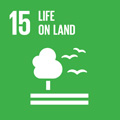- Docente: Sonia Silvestri
- Credits: 6
- SSD: GEO/04
- Language: Italian
- Teaching Mode: Traditional lectures
- Campus: Ravenna
- Corso: Second cycle degree programme (LM) in Science and Technologies for Environmental Sustainability (cod. 6055)
-
from Mar 19, 2025 to May 28, 2025
Learning outcomes
At the beginning of the course, the fundamentals of geomatics and the theoretical basics of the characteristics and functioning of Geographic Information Systems (GIS) will be studied. Alongside GIS knowledge, the student will acquire the theoretical foundations of Remote Sensing sufficient to master the use of data from various satellite platforms. The theoretical skills acquired during lectures will be complemented by practical exercises with the most used open-source and open-access software in geosciences (QGIS, SNAP, SAGA, etc.). The exercises will be aimed at understanding real case studies applied to the management of the territory and the study of the environment, with progressively more complex tasks that will include the simultaneous use of cartographic and remotely sensed data (vector and raster). By the end of the course, the student will be able to use fundamental georeferencing and cartographic restitution tools, search for, download, and process various types of satellite data, and ultimately produce thematic maps of interest (e.g., land use).
Course contents
The course includes lectures on theoretical aspects as well as practical exercises with software tools. The following topics will be covered:
- Fundamentals of geomatics (reference systems in cartography, geographic and planar coordinates, etc.).
- Structure and characteristics of GIS and main tools for analyzing vector and raster data.
- Introduction to the basic theory of remote sensing and the principles of electromagnetic radiation.
- Fundamentals of image processing.
- Overview of sensors used in remote sensing (both remote and drone) and satellite missions.
- Creation and management of raster, vector, and attribute files.
- Knowledge of the main vector and raster databases at regional, national, and European scales and use of the data contained in them to perform various types of analyses, with particular reference to spatial analyses and the production of thematic maps.
- Production of thematic maps.
- Applications to real cases and problem-solving.
The course will help understand how Remote Sensing and GIS are fundamental tools for the continuous monitoring and updating of territorial and environmental information.
Readings/Bibliography
The .pdf files of the lectures will be made available. Students will also find bibliographic references within the course slides.
Teaching methods
The course consists of lectures and laboratories that will include the utilization of the QGIS, SNAP, SAGA or similar software.
Assessment methods
At the end of the course the students will develop a project which will allow them to apply the skills acquired during the course in both Modules. The verification of the skills acquired consists of an oral exam in which the project must be presented and discussed, and which will also include theory questions.
Teaching tools
PC, video projector, PowerPoint presentations.
Office hours
See the website of Sonia Silvestri
SDGs


This teaching activity contributes to the achievement of the Sustainable Development Goals of the UN 2030 Agenda.
